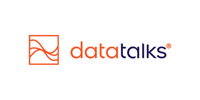Identity Resolution and the Golden Record in Data Talks CDP
Leverage automated identity and event resolution to drive personalised, consistent supporter experiences.
📌 What is Identity Resolution (Golden Record) and Why It Matters
In today’s multichannel world, the same supporter might appear in your systems in multiple ways — using different emails, devices, or names. A support might register with different contact information in your Ticketing and in your Merchandise shop. Identity Resolution is the process of recognizing and merging these fragmented records into a single, deduplicated and unified customer profile, which we call the Golden Record.
Why it matters:
-
Provides a 360° view of each supporter
-
Eliminates data duplication
-
Enhances personalization and targeting
-
Ensures accurate analytics and reporting
-
Supports compliance with data regulations like GDPR
⚙️ How the CDP Creates the Golden Record
Data Talks CDP automatically and flexibly consolidates records from multiple data sources (e.g. CRM, ticketing, merchandise, website, mobile application, newsletter tools) into a single, unified profile. This is achieved through deterministic identity resolution — meaning it merges profiles based on known, exact match rules, not probabilistic guesses. The creation of your organization's Golden Record is done during your Onboarding phase with the help of our Customer Success team. The team considers your different data sources and suggest the most ideal profile merging logic to your own data set.
The process includes:
-
Ingesting profile data from multiple sources
-
Matching incoming data against existing records using defined rules, e.g.: email + first_name to be the unification rule. By default, the CDP marks these values case insensitive and trims all trailing spaces to ensure maximum matching.

-
Applying priority to sources in case of conflicting data, e.g.: if you have date_of_birth in multiple system but the values differ, which system's data should enjoy priority in your Golden Record

- Applying data transformation logic to specific fields to clean your data set, e.g.: transforming names written in all capital letter using a proper function (PETER -> Peter). This is an optional but recommended step.

-
Building one “Golden Record”, i.e. your supporters' profile pages that continuously updates as new data flows in
🔄 Common Merging Patterns
Each organization can define its own merging rules based on available identifiers. Here are some common strategies:
1. Email-Based Merge
-
How it works: All records with the same email are merged into one profile
-
Pros: Simple to implement, high match accuracy
-
Cons: Fails if a person uses multiple emails or shared addresses, e.g. in families or within a company
2. Email + First Name Merge
-
How it works: Combines email with a soft identifier like first name
-
Pros: Reduces false merges in shared email scenarios
-
Cons: Still brittle if names are inconsistently formatted
3. Single Sign-On (SSO) Based Merge
-
How it works: Relies on unique, persistent identifiers like CRM ID, membership ID, or OAuth
-
Pros: Highly reliable and scalable
-
Cons: Requires infrastructure support and consistent usage
Organizations may also define fallback rules to determine how merging should proceed in ambiguous cases.
🧠 What to Think of in Advance
Before configuring Identity Resolution, consider:
-
What identifiers do you trust the most? (Email, CRM ID, Phone number?)
-
Are some sources more authoritative than others?
-
How do you handle supporters with partial or missing data?
-
How will merging affect your analytics or communication flows?
- Can there be Collisions from multiple sources and how best to resolve them?
Tip: Work with your data stakeholders to define clear merge rules and source priorities.
🔧 Data Transformation Capabilities
To ensure successful merging, the CDP supports lightweight transformations during ingestion:
-
Standardizing names (e.g., capitalize first letters)
-
Adding country codes to phone numbers
-
Formatting emails and dates
-
Mapping source-specific attribute names to unified fields
These transformations ensure consistency before data is evaluated for merging.
🧬 The End Result: Unified, Clean Profile Page
Once the Golden Record is created:
-
You’ll see a single supporter profile with attributes merged from all sources
-
Conflicting data is resolved based on source priority settings
-
Linked events and history from all sources are available in one view
-
You can use this unified profile for segmentation, personalization, and analysis
✅ Example: A supporter buys a ticket via your ticketing system, signs up to your newsletter with another email, and later logs in to your website with an SSO ID. Data Talks CDP links all those actions to the same supporter profile — with one click.
